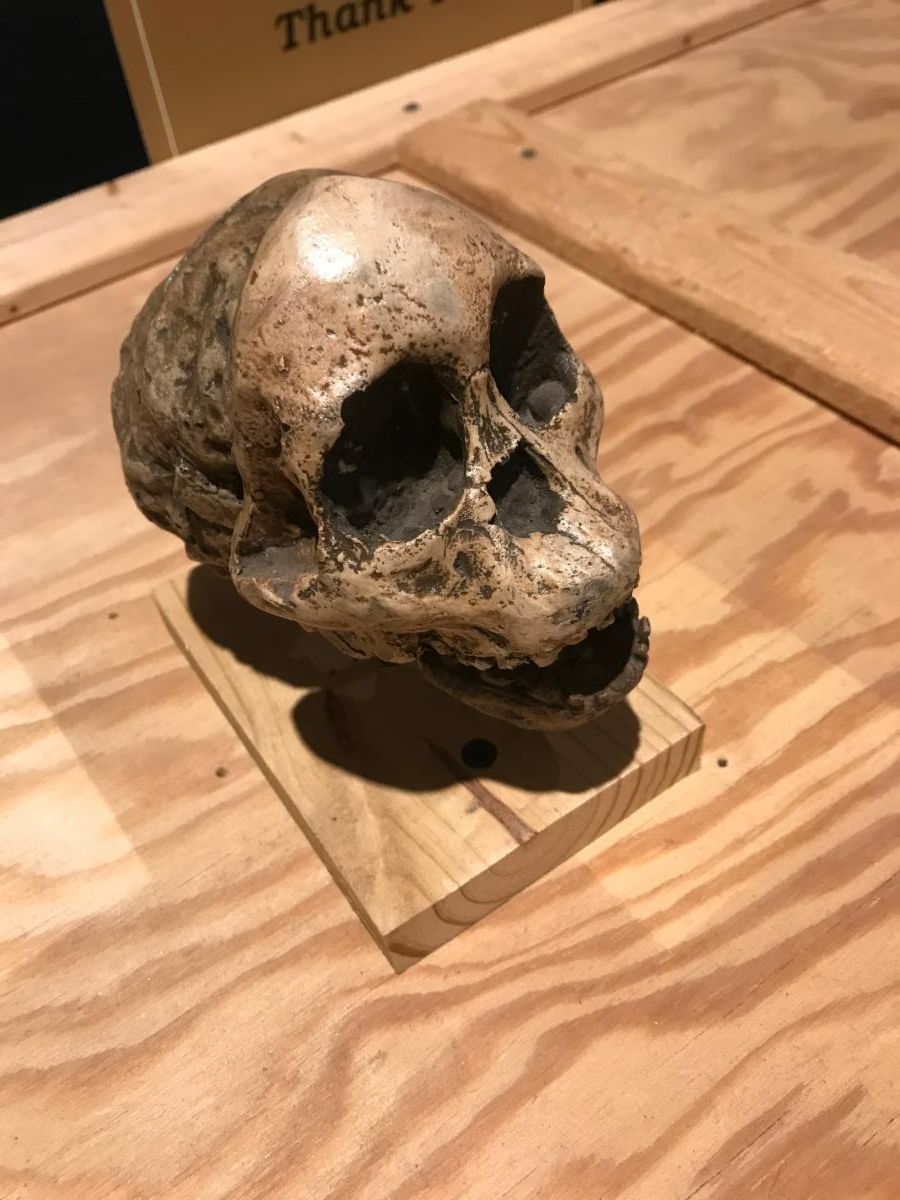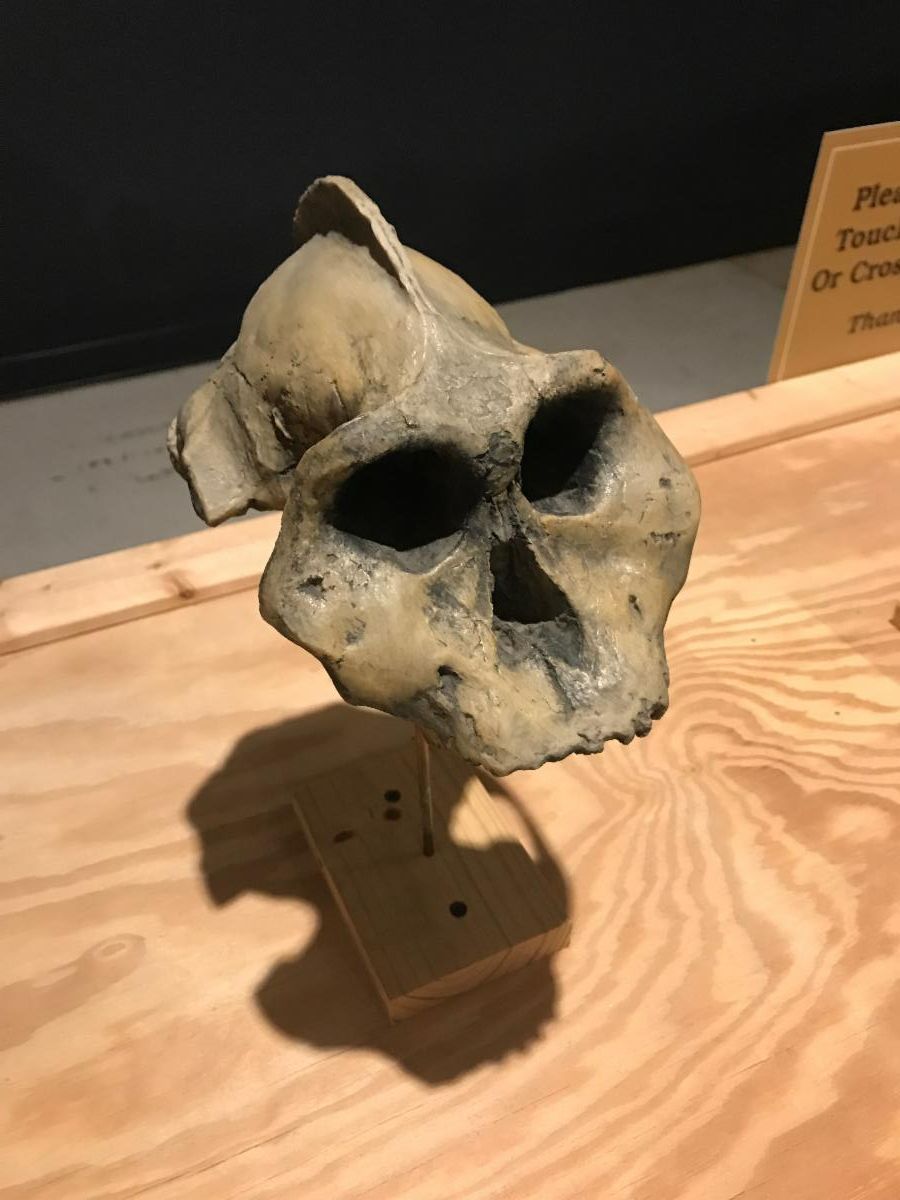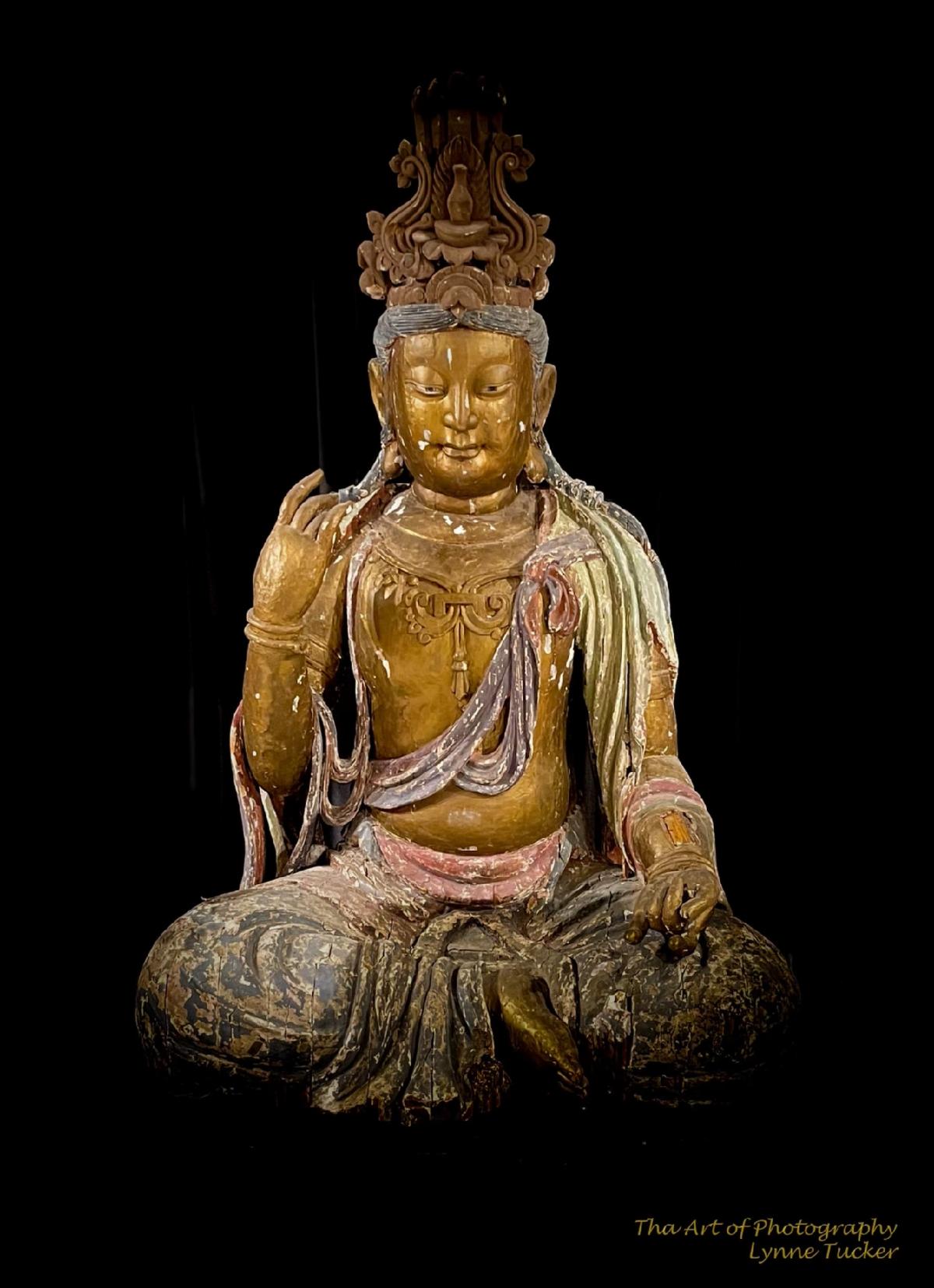|
MoAW
presents
Spotlight:
Celebrating Human Ancestors
Before The Rise of Mankind
| |
|
PALEO
The Story of Life
4.6 billion hears of fossil history
Drawn from the world’s foremost fossil collections, the unprecedented treasury of fossil casts known as PALEO The Story of Life brings together into one exhibition some of the most exciting finds in the history of paleontology from over a century of worldwide excavations, exhibited in geological, chronological order.
Spanning 4.6 billion years in scope, from the earliest invertebrate marine life through the Triassic, Jurassic, and Cretaceous dinosaurs to mammals and prehistoric humans, this internationally acclaimed, comprehensive collection dramatically illustrates the awesome story of prehistoric life on Earth.
Displaying casts of rare fossils from the Americas, Europe, Asia, Africa, and Australia, this prestigious collection includes skeletons, skulls, claws, and eggs gathered from such revered museums as the Smithsonian Institution, the American Museum of Natural History, The Royal Ontario Museum, and the Carnegie Museum, as well as many others.
| |
 | |
"Whenever I look at a bone, I always see the fingerprints of the god that created it." - Pablo Picasso.
As art sometimes reflects nature, so, in turn, does nature occasionally reflect art. These bones, teeth, and talons tell a story. A story of living molecules beginning to reproduce themselves in an ancient sea and gradually crawling out onto dry land. A story of dynasties of giant, complex creatures dominating land, sea, and sky, descended from the tiniest and simplest of ancestors in an incredible chain of reproduction and diversification. A story of strength, ferocity, and gentleness in titanic proportions, in other words, the story of the ingenious adaptability of life in the face of death. For in this struggle we see dramatic evidence of nature’s unrelentingly exploratory forces at work. Viewed as a progression of sculptures, one could say that a distinct style emerges early and gradually refines itself over millions of years, sometimes simple, sometimes quite baroque, and usually astonishingly practical. A story without words, cleft by humankind from stone. - H. W. Martin
|  | |
Order Primates,
Family Hominidae
Australopithecus africanus
Late Pliocene, South Africa
From 3 million to 1 million years ago,
several species of bi-pedal ape-men
coexisted throughout Kenya, Ethiopia, Tanzania, and South Africa. Descended from afarensis and thoroughly established
3 million years ago, the gracile africanus species is believed by many to be intermediate between afarensis and Homo habilis, although its direct relation to humankind is still the subject of debate due to the robust size of its molars, a characteristic of subsequent species of australopiths not shared by the genus Homo.
Using their hands for gathering and
carrying, Australopithecus africanus walked erect, presumably foraging for roots and seeds and perhaps even scavenging remains from carnivore kills in small groups throughout the tropical savannas of eastern and southern Africa.
Formerly recognized as “Plesianthropus (“Near Human”), this skull was discovered by Robert Broom in1947 in the Sterkfontein quarry and became popularly known as “Mrs. Ples”, although it is now recognized as Australopithecus.
From 3 to 4 feet tall and weighing 45 to 90 pounds, these small apelike creatures ranged throughout the grasslands of Kenya, Ethiopia, Tanzania, and South Africa, living
alongside their evolutionary descendants for over a million years.
They became extinct
about 1 million years ago, and survived, according to some paleoanthropologists, by their Homo descendants. Transvaal Museum. Pretoria, South Africa.
|  | |
Order Primates,
Family Hominidae
Australopithecus africanus transvaalensis
Late Pliocene, South Africa
Discovered by Raymond Dart in 1924 in a limestone cave in Taung, South Africa, this extraordinary specimen of a 3-year-old gracile australopith is the first ancestral hominid fossil ever to be found. Once known as “The Missing Link”, it is now formally recognized as Australopithecus africanus, popularly known as the Taung Child.
The opening for the spinal nerves, located at the bottom of the skull rather than near the back, indicates this young hominid stood erect and walked on 2 feet, a fact reinforced by the subsequent discovery of humanlike africanus pelvic bones.
Judging by other fossilized bones of known extinct mammals found in the cave, the geological age of the Taung Child has been estimated at about 2 million years. Remarkably preserved with its furrows and convolutions intact, the fossilized cast of the Taung Child’s brain indicates that these ancestral hominids possessed small brains, midway in size between those of apes and humans. Transvaal Museum.
|  | |
Order Primates,
Family Hominidae
Australopithecus aethiopicus
Late Pliocene, Kenya
Darkly stained by manganese, the enigmatic “Black Skull” was discovered in 1985 by Alan Walker on the west shore of Lake Turkana in northern Kenya.
Dated at 2.6 million years, this vegetarian hominid exhibits primitive skull traits of the earlier afarensis species from which it was derived, along with advanced facial characteristics of both the later robustus and boisei species. Prior to the Black Skull’s discovery, the direct ancestor of the robust hominids was firmly believed to be Australopithecus africanus.
The age of aethiopicus, however, with its massive teeth and sagittal crest, implies that it, and not the gracile africanus, is the intermediate stage between afarensis and the robust australopiths, thus giving credence to the standing of africanus as the transitional species between afarensis and Homo, a more plausible scheme according to many paleoanthropologists.
Possessing the smallest brain of any known hominid, this profoundly controversial fossil provoked a complete redrawing of humankind’s family tree. From Lake Turkana. Kenya National Museum.
|  | |
Order Primates,
Family Hominidae
Australopithecus robustus
Late Pliocene, South Africa
Although the early gracile australopiths were scarcely larger than a chimpanzee, the later robust species were a little over 5 feet in height. Walking upright throughout the savannas of eastern and southern Africa, these larger hominids were gatherers who fed on leaves, seeds, berries, and perhaps insects, possessing little, if any, knowledge of toolmaking. Presumably descended from the gracile afarensis, the robust australopiths were a branch that did not survive.
Largely regarded as a female (due to its size), this individual was discovered in 1950 at the Swartkrans cave in Transvaal, where its carcass had apparently been dragged by a leopard.
An advanced primate closely related to humankind, Australopithecus robustus was not on the evolutionary path that led to Homo. Though it has been argued by some that robustus and africanus are simply males and females of the same species, undisputed robustus finds appear to be exclusive to South Africa.
Appearing about 2.5 million years ago, robustus died out after about a million years, though not before giving rise to boisei. Ascribed female from the Sterkfontein Valley. Transvaal Museum.
|  | |
MoAW's mission is to educate a diverse audience about the history of ancient civilizations and prehistoric life using fossils and artifacts from a variety of cultures and time periods; to enhance universal curriculum development for local and surrounding school districts, colleges, and universities, establishing museum diversity for the Coachella Valley.
Hours of Operation:
Monday - Saturday
10:00 a.m. to 6:00 p.m.
Sunday 12:00 noon to 5:00 p.m.
The last admission is taken one hour before closing.
Admission:
$15.00 Adults
$12.00 Students, Seniors, & Military
$ 3.00 Discount available for Coachella Valley Residents
$10.00 Group Rate for 10 or more individuals.
A 501(c)(3) nonprofit organization, MoAW is a member of the North American Reciprocal Museum (NARM) Association, the American Alliance of Museums, and the California Association of Museums.
MoAW IS SPONSORED BY
| |
Members Perks
The newest perk of membership: Free admission to over 1,200 museums nationwide through the North American Reciprocal Museum Program (NARM) Plus, discounts at their museum shops and restaurants (if given to their members). Local museums include the Palm Springs Art Museum and Cabot's Pueblo Museum, several museums in Los Angeles, San Diego, San Francisco, throughout California, all 50 states, and the District of Columbia, plus Canada, Mexico, and Bermuda. This is available to all members at the Donor Level ($125.00) or higher. Current members who qualify will be receiving new membership cards with the NARM logo to be used at participating museums.
Current members who would like to upgrade their membership to take advantage of this new benefit please give us a call, (442) 268-5004.
Click below for more information and to join.
THANK YOU
| |
On Display In Association With PALEO: The Story of Life
STARSCAPE:
A Journey To The
Beginning of Time
This spectacular collection of 33 space photographs combines breathtaking digitalized images from the historic Mariner, Viking, and Voyager probes with stunning photographs from the Apollo lunar missions, the Hubble Space Telescope, and ground-based observatories. Gathered from the National Aeronautics and Space Administration, The Jet Propulsion Laboratory, the California Institute of Technology, the Royal Observatory, Edinburgh, the Hansen Planetarium, and the Hubble Telescope, this awesome display of cosmic spectacles is a journey to the early days of the cosmos.
|  |
Cathedral City
Historical Society
presents
Then and Now
A 40th-year anniversary exhibition of the history of Cathedral City
A comprehensive photographic and artifact-rich timeline of the history of Cathedral City will greet you upon entering the lobby of the Museum of Ancient Wonders. This is an exhibition of recollections of the people and places that created Cathedral City's early history and to celebrate the 40th anniversary of its burgeoning progress, from the past to the present, THEN AND NOW is a loving tribute to the City of Cathedral City.
|  | |
PALEO: The Story of Life
4.6 billion years of fossil history
Drawn from the world’s foremost fossil collections, the unprecedented treasury of fossil casts known as PALEO: The Story of Life brings together into one exhibition some of the most exciting finds in the history of paleontology from over a century of worldwide excavations, exhibited in geological, chronological order.
From 2.5 billion-year-old single cellular cyanobacteria responsible for the oxygenation of the atmosphere to the first multicellular life of 700 million years ago, PALEO: The Story of Life spans 4.6 billion years in scope. From the Precambrian to the Paleozoic Era, from the Triassic, Jurassic, and Cretaceous Periods of the Mesozoic Era to mammals and prehistoric humans of the Cenozoic Era (including the famous Lucy skeleton), this internationally acclaimed, comprehensive collection dramatically illustrates the awesome story of prehistoric life on Earth.
Displaying casts of rare fossils from the Americas, Europe, Asia, Africa, and Australia, this prestigious collection includes skeletons, skulls, claws, and eggs gathered from such revered museums as the Smithsonian Institution, the American Museum of Natural History, The Royal Ontario Museum, the Carnegie Museum, and the National Museums of Kenya, Ethiopia, and Tanzania, as well as many others.
|  | |
ALL UNDER HEAVEN
Treasures of the East
Earth, Heaven,
and the Afterlife
A Very Special Gift From
Marlene and Bruce Kanter,
Heather James Fine Art
Michael H. Healy
Tianxia (天下) or, All Under Heaven is one of the most ancient Chinese phrases having been used for more than three thousand years, it defines the ideal of a perfect and harmonious empire in the eyes of the people.
50 original antiquities spanning millennia (3,600 B.C. to 1850 A.D.) of ancient Asian Cultures from mysterious funerary objects and life-size protective temple guardians to decorative terracotta sculptures of beasts of burden created for the tombs of the deceased. With a tapestry of silk and gold thread, a rare lacquered cosmetic box and earthen vessels, bronze statues, these ancient treasures from China, Japan, Indonesia, and Southeast Asia, celebrates everlasting happiness, enduring remembrance, and eternal life.
MoAW premieres these dazzling artifacts for the first time together in one exhibition All Under Heaven: Earth, Heaven, and the Afterlife.
|  |
LUCY:
The Story of Human Origins
(Courtesy of the Institute of Human Origins and the National Museum of Ethiopia,
Addis Ababa)
On view exclusively at the
Museum of Ancient Wonders
| |
MoAW, Museum of Ancient Wonders
Cathedral Gateway Plaza
69028-B East Palm Canyon Drive
HWY 111 at Date Palm Drive
Cathedral City, CA 92234
(442) 268-5004
moaw.org
MoAW is a 501(c)(3) non-profit organization
| | | | | |